Digital Accessibility: Perceptions, Expectations and Reality (White Paper)
The aspect of equal access to the Web has always been a critical driving factor in the development of this digital medium. Indeed, it was Sir Tim Berners-Lee who stated “The power of the Web is in its universality. Access by everyone regardless of disability is an essential aspect.” (World Wide Web Consortium: Web Accessibility Initiative (W3C WAI) 2019)
The goal of this research was to determine if there is a disparity between the perceptions organizations have regarding the accessibility of their digital products and the experience of the user.
The standards for digital accessibility are well-defined and embedded in processes and legislature in most countries. Universal access is considered an essential aspect, as stated by Sir Tim Berners Lee, the founder of the World Wide Web. Why then, do we continue to observe a low rate of adoption of the digital accessibility principles?
In this paper, the authors survey both organizations and users to determine the disparity mentioned above and to add to that a discussion that will inform owners of digital products how best to remedy the situation and create a more meaningful user experience, while demonstrating the business benefits of improving digital accessibility for the website owner.
To download this white paper as PDF, click here. Otherwise you can navigate using the navigation links on the left or clicking the section links at the bottom of each page.
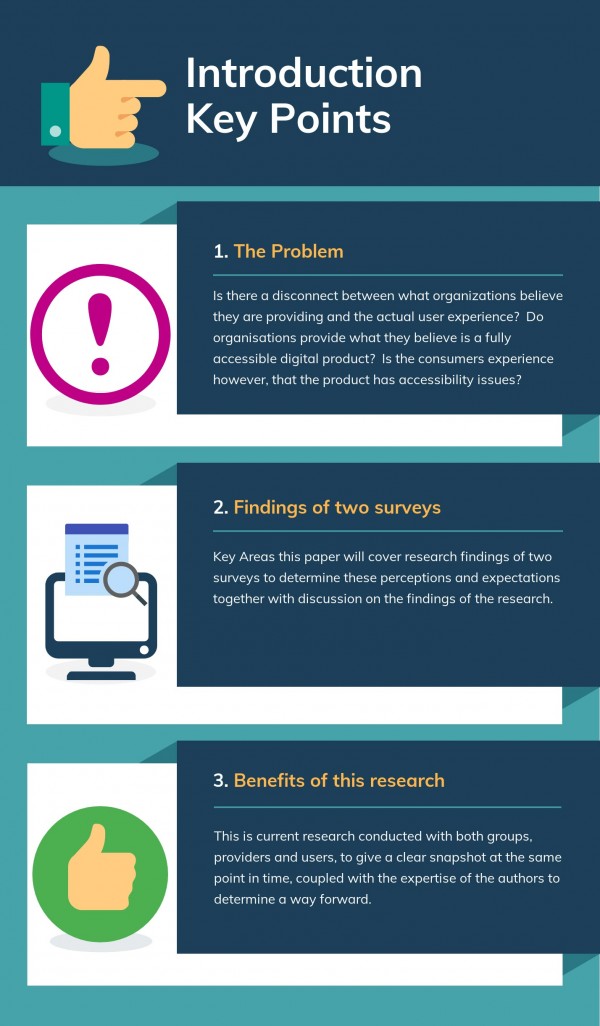
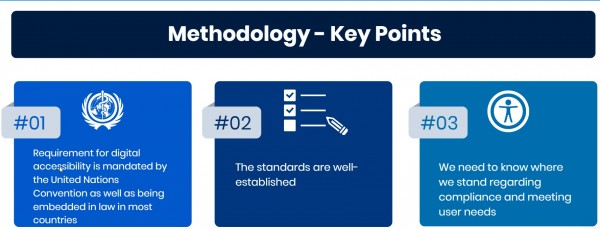
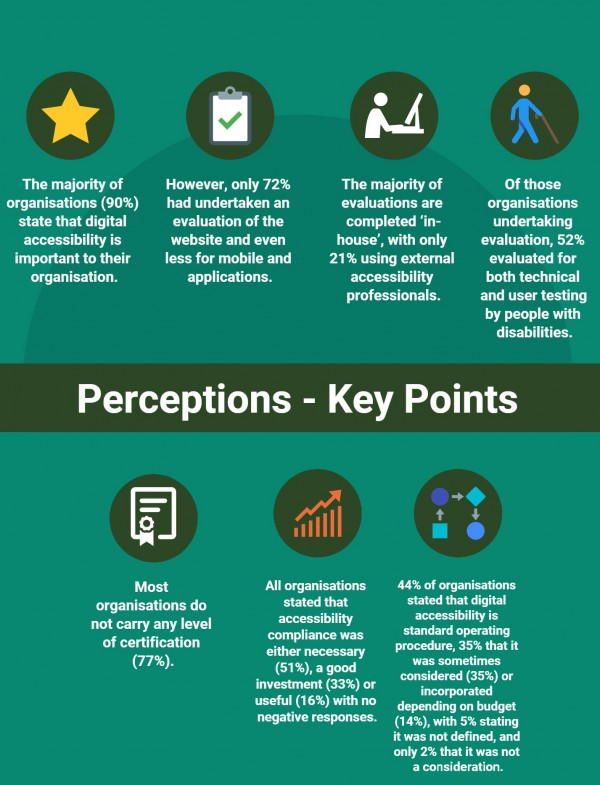
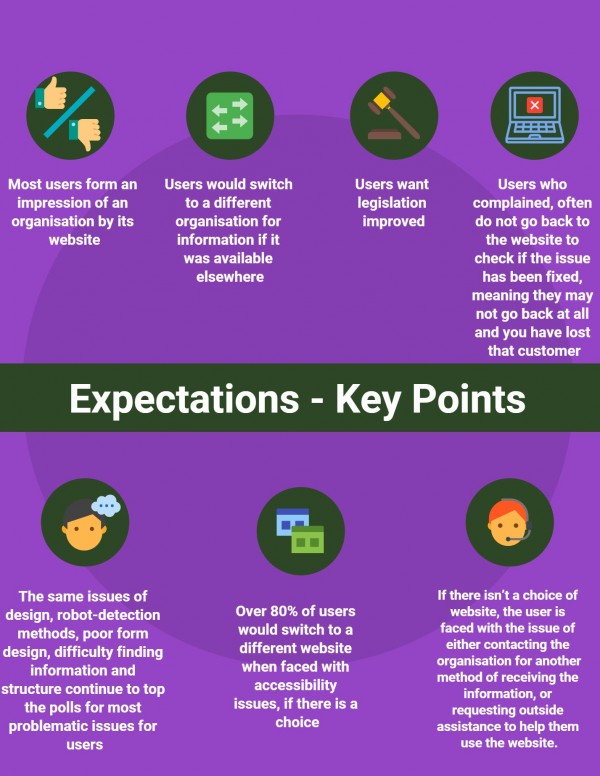
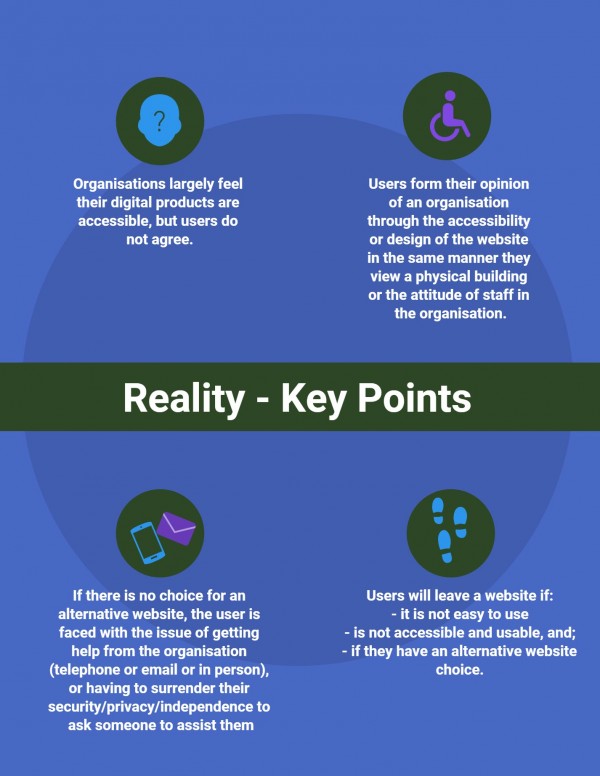
Take me to the next section: Introduction